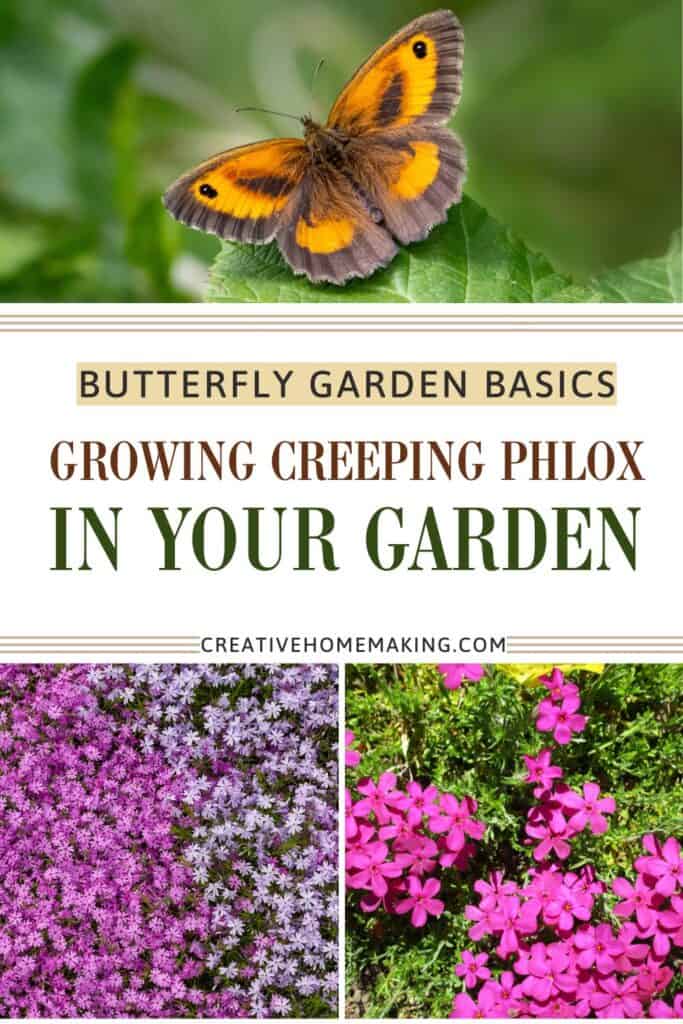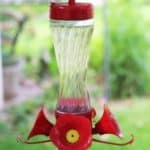If you want to attract butterflies to your garden, growing creeping phlox is an easy and beautiful way to do it. Creeping phlox produces colorful blooms that butterflies love, making your garden a lively spot full of pollinators. This low-growing plant also spreads quickly, creating a colorful carpet that looks great and supports wildlife.
This post may contain affiliate links.
Creeping phlox grows well in part shade with moist, rich soil, and once it is established, it needs little care. The flowers bloom in spring, giving early-season butterflies a much-needed food source. Adding creeping phlox to your garden can help create a peaceful and colorful space that attracts butterflies all season long.
Related Article: Bee Balm 101: The Pollinator Plant Every Garden Needs

Planting Creeping Phlox for Butterfly Gardens
To grow creeping phlox that attracts butterflies, you need to pick the right varieties, find a good spot with enough sun, and prepare the soil properly. These steps help your plants thrive and provide plenty of nectar for pollinators.
Related Article: How to Grow Verbena for a Butterfly-Friendly Garden
Choosing the Best Varieties for Pollinators
When picking creeping phlox, look for types with bright colors like purple, pink, or white. These shades attract butterflies because they stand out well to their eyes.
Related Article: Top 11 Butterfly-Friendly Plants for Your Garden
Choose varieties that bloom in spring and early summer when butterflies start visiting gardens. Phlox subulata, also called creeping phlox, is a great option because it produces lots of nectar.
You want hardy plants that handle your local weather. If your area is humid, pick mildew-resistant types to avoid common problems with powdery mildew. Healthy plants make the best food sources for butterflies.
Related Article: How to Grow Joe Pye Weed to Attract Butterflies
Selecting the Ideal Planting Location
Creeping phlox grows best in full sun or somewhere that gets 4-6 hours of sunlight each day. Butterflies prefer sunny spots where they can rest and feed comfortably.
Look for a place with good air flow to keep plants dry and healthy. Avoid areas that stay wet or have poor drainage because that can cause root rot.
If you add phlox near rocks or slopes, butterflies will like the mix of flowers and warm surfaces to land on. Make sure your location isn’t too shaded since that can reduce flower production.
Related Article: Guide to Growing Asters: Bring More Butterflies to Your Yard
Soil Preparation Tips
Creeping phlox thrives in soil that is well-drained but keeps some moisture. You want to avoid heavy clay or soggy soil.
Before planting, loosen the soil and mix in organic matter like compost or peat moss. This helps improve drainage and adds nutrients.
Related Article: Why Every Butterfly Garden Needs Milkweed
Check the soil’s pH, aiming for slightly acidic to neutral (around 6.0 to 7.0). You can add lime if the soil is too acidic.
Add mulch around plants after planting to keep moisture in and stop weeds. Just don’t let mulch touch the stems to prevent rot.
Related Article: Growing Coneflowers from Seed: A Beginner’s Guide
Caring for Creeping Phlox to Attract More Butterflies
Proper care helps your creeping phlox bloom longer and stay healthy. Feeding, watering, pruning, and pairing with the right plants all play a role in attracting butterflies to your garden. Paying attention to these details will give you bright flowers that pollinators love.
Watering and Feeding Strategies
Water your creeping phlox regularly, especially during dry spells. Keep the soil moist but not soggy. Overwatering can cause root problems, so let the top inch of soil dry out a bit between watering.
Related Article: How to Grow Verbena for a Butterfly-Friendly Garden
Feed your plant once a year in early spring with a balanced, slow-release fertilizer. Too much nitrogen can reduce blooms, so avoid high-nitrogen fertilizers. Use compost or organic mulch around the base to keep moisture in and add nutrients.
Watering deeply once a week is usually enough. In very hot weather, increase watering but avoid wetting the foliage to prevent fungal issues.
Related Article: Why Every Butterfly Garden Needs Milkweed
Pruning for Maximum Bloom
Pruning helps creeping phlox grow thicker and bloom more lilies. After the flowers fade, trim back the faded blooms to encourage new growth.
Cutting back the plant lightly in early summer will help maintain a neat shape and promote another flush of flowers. Avoid heavy pruning late in the season, which might reduce next year’s blooms.
Regular removal of dead or weak stems keeps the plant healthy and improves airflow, reducing disease risk. This simple care helps your phlox stay attractive for pollinators.
Companion Plants That Support Butterflies
Planting other butterfly-friendly flowers near creeping phlox creates a welcoming habitat for pollinators. Choose flowers with varying bloom times to provide nectar all season long.
Good companions include lavender, coneflowers, and bee balm. These plants attract butterflies, bees, and hummingbirds that will visit your garden often.
Also, include some native wildflowers where possible. They offer familiar food sources butterflies rely on and encourage them to stay in your garden longer.
Using a mix of colors and flower shapes increases your chances of seeing many butterfly species.
Follow my Butterfly Garden board on Pinterest.




